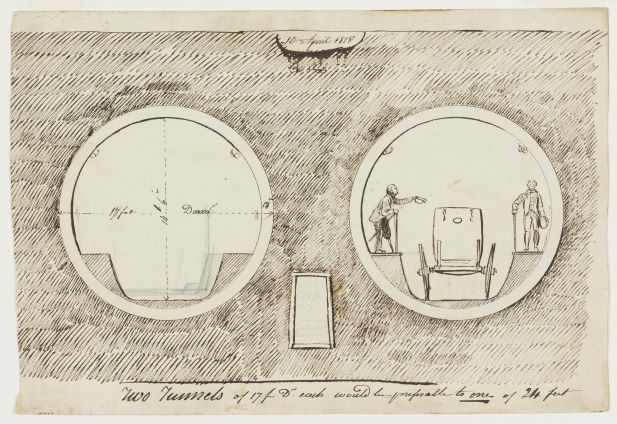The Thames Tunnel as built differs from the original ideas set forward by Marc Brunel in 1818.
Today’s Thames Tunnel is a horseshoe shape, but Marc did consider a circular tunnel at one point as these two images from the Thames Tunnel watercolours show. However, it didn’t take him long to realise a circular tunnel face could not accommodate many miners.
This wasn’t the only change Marc made. The hydraulic jacks that Marc originally envisaged were replaced by screw jacks, which moved the tunnelling shield forward during construction. The changes were necessitated by both practical and economic considerations.
We can see how Marc changed his mind and tested new ideas on paper with the Thames Tunnel Watercolours.
By the time it opened, its function had changed too. The Thames Tunnel was built to allow wheeled traffic to move under the Thames, to improve the flow of goods from boats on the Thames out to the rest of the country. Unfortunately, the giant spiral ramp approaches needed for horses and carts were never built, as sufficient funding for the work could not be obtained.
The tunnel was sold to the East London Railway Company on the 25th of September 1865 for £800,000. The first trains to run through it (in 1869) were steam trains (for both passenger and goods transit). The line was electrified in 1913 and trains continue to run through it as part of the London Overground to this day.



